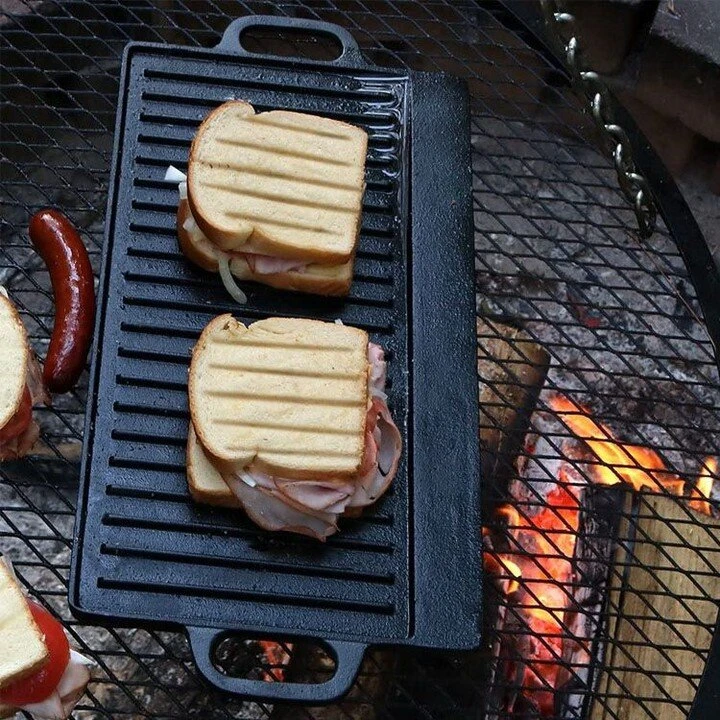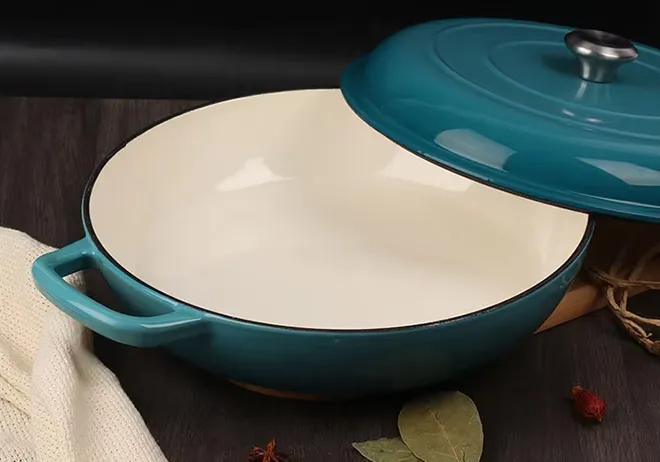
Feb . 12, 2025 13:04
Back to list
ENAMELED CAST IRON SAUCE POT, RED 19CM
When exploring cookware options for the kitchen, many find themselves caught in the debate between traditional cast iron and enameled cast iron. This choice significantly impacts cooking performance, maintenance, and durability. Both types have their merits and specific use-cases, and the best choice depends on individual cooking needs and lifestyle. This article delves into the details of each type, highlighting their advantages and potential drawbacks.
However, enameled cast iron is not without its flaws. The enamel coating can chip or crack if mishandled, requiring more careful usage. Additionally, enameled pieces are usually more expensive than traditional cast iron, reflecting the cost of manufacturing and the aesthetic appeal. Some chefs argue that although enameled cast iron distributes heat well, it might not match the conductivity or non-stick properties of a well-seasoned traditional cast iron skillet. When deciding between these two types of cookware, consider not only the cooking experience but also practical aspects such as cleanup and storage. For those who cook often and appreciate the tradition and longevity of cookware, traditional cast iron is a rewarding challenge that pays off with enhanced flavor and durability. Conversely, enameled cast iron is perfect for those who value convenience and aesthetics and are willing to gently handle their cookware to preserve their investment. Ultimately, the decision between cast iron and enameled cast iron hinges on personal preference and cooking style. Aspiring chefs may enjoy building their seasoning and achieving perfect sears with a traditional skillet. At the same time, casual cooks might prefer the straightforward care and visual appeal of enameled pieces. By weighing the benefits and limitations of each, one can make an informed decision that aligns with their culinary goals, ensuring years of satisfaction in the kitchen.


However, enameled cast iron is not without its flaws. The enamel coating can chip or crack if mishandled, requiring more careful usage. Additionally, enameled pieces are usually more expensive than traditional cast iron, reflecting the cost of manufacturing and the aesthetic appeal. Some chefs argue that although enameled cast iron distributes heat well, it might not match the conductivity or non-stick properties of a well-seasoned traditional cast iron skillet. When deciding between these two types of cookware, consider not only the cooking experience but also practical aspects such as cleanup and storage. For those who cook often and appreciate the tradition and longevity of cookware, traditional cast iron is a rewarding challenge that pays off with enhanced flavor and durability. Conversely, enameled cast iron is perfect for those who value convenience and aesthetics and are willing to gently handle their cookware to preserve their investment. Ultimately, the decision between cast iron and enameled cast iron hinges on personal preference and cooking style. Aspiring chefs may enjoy building their seasoning and achieving perfect sears with a traditional skillet. At the same time, casual cooks might prefer the straightforward care and visual appeal of enameled pieces. By weighing the benefits and limitations of each, one can make an informed decision that aligns with their culinary goals, ensuring years of satisfaction in the kitchen.
Previous:
Latest news
-
Season Cast Iron Perfectly with GPT-4 Turbo TipsNewsAug.01,2025
-
High Quality Cast Iron Cookware - Baixiang County Zhongda MachineryNewsAug.01,2025
-
Premium Cast Iron Pan: Durable & Perfect HeatNewsAug.01,2025
-
High Quality Kitchen Durable Black Round Cast Iron Cookware Pancake Crepe Pan-Baixiang County Zhongda Machinery Manufacturing Co., Ltd.NewsAug.01,2025
-
Cast Iron Cookware - Baixiang County Zhongda Machinery | Nonstick, Heat ResistanceNewsAug.01,2025
-
High Quality Kitchen Durable Black Round Cast Iron Cookware - Baixiang County Zhongda Machinery | Non-Stick, Heat Retention, DurableNewsJul.31,2025


